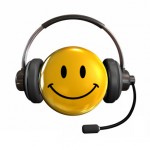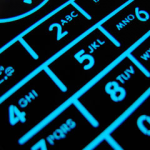 Folks assigned to work on teams may not always be a good fit. An example of this is dealing with a team member who has a reputation of not working well with others. There are two ways to handle it. (Use the method that best suits the culture of your organization.)
Folks assigned to work on teams may not always be a good fit. An example of this is dealing with a team member who has a reputation of not working well with others. There are two ways to handle it. (Use the method that best suits the culture of your organization.)
One way is for the team leader to have a one on one conversation with this individual about shared expectations and what is the best for the team and organization. The second way is to have a team meeting with an open dialog on the key elements of impactful communications. Outline acceptable methods of how to handle any potential conflict and decide on the best way to agree to disagree.
The most important thing is ensure the team is successful as a group.
Posted on 11 April 2013 Comments (0)
Tags: Anna's Posts, Appearance, Business Etiquette, Civility, communication, Culture, Leadership, Lifestyle, Networking, Personal Development, Women's Appearance
When Samantha takes a walk, she always starts full of the potential excitement of her adventure. Her head is held high and her gaze is straight ahead, eyes shining with great anticipation about what she might see. For those of you who know, Samantha is my bison (you can see her picture on the far upper right corner).
Wouldn’t it be great if each time you walked into a room, you had the good anticipatory feeling of exploring something new? It projects in your body, facial expressions and even your walk. It is the aura of confidence and creates a wonderful first impression.
Rec ently, I was at Costco getting my tires replaced and the electricity in a one block radius went down. There was no indication from ComEd when the power would go back up. The registers could only take cash or check.
ently, I was at Costco getting my tires replaced and the electricity in a one block radius went down. There was no indication from ComEd when the power would go back up. The registers could only take cash or check.
Within a heartbeat the employees began apologizing. They also offered bottled water and cookies to everyone. The cookies were the big ones in oatmeal/raisin, chocolate chip and toffee. Plus, you could have more than one!
I stayed for about an hour. When I left they were still giving out bottles of water and cookies. The tire folks called me back in about two hours when the power came back on. I was so impressed. They explained and apologized for the inconvenience even though they were not the problem. This is an example of the good customer service.
Now comes the bad. I was traveling for a client and had a 5:15 pm flight back to Chicago. The flight was delayed three times. However, we only found out each time were to board that the flight would be delayed. Finally, we began to board at 11 PM, waited 20 minutes only to be informed that the flight was cancelled.
No warnings or apologies were given. The airline personnel attitude was more like: Why you are bothering us with your presence? I was much more impressed by the passengers who (like myself) never got mad or raised their voices.
It was interesting going from very good customer treatment to bad and ugly in a matter of just a few days.
 Unfortunately, it has become very common not to respond to e-mails, phone calls, voice messages and even direct questions. I find that a true professional will respond with one of the following statements:
Unfortunately, it has become very common not to respond to e-mails, phone calls, voice messages and even direct questions. I find that a true professional will respond with one of the following statements:
– I will get back to you when we have an answer.
– I received your message and will get back to you by________.
– I received your message and will get back to you as soon as I can.
A real professional will respond within 24 hours. Become a pro who always gives the courtesy of a response. If you are already responsive, good going and keep it up.
 In the book “Shouting Won’t Help,” author Katherine Bouton whose hearing loss began at age 30, lists three tips on how to help someone who has a hearing loss. They are:
In the book “Shouting Won’t Help,” author Katherine Bouton whose hearing loss began at age 30, lists three tips on how to help someone who has a hearing loss. They are:
– Look at the person you are talking to
– Repeat the question or answer by paraphrasing it
– Articulate using a normal voice and even pace.
It’s all great advice since many folks today may experience hearing loss due to loud noises and ear phone usage. In fact, we are getting used to seeing hearing aids because they are becoming as commonplace as glasses.
Also, if you have a hearing loss – let people know about it in an easy conversation. It will remind them to use the three tips above and help you understand what they are saying.
 I just finished reading “Complaint is a Gift” by Janelle Barlow and Claus Moller (It is out of print.). It highlights case studies from companies who have used customer complaints as a tool to strengthen their services and products (British Airlines is one of those cited in the book.)
I just finished reading “Complaint is a Gift” by Janelle Barlow and Claus Moller (It is out of print.). It highlights case studies from companies who have used customer complaints as a tool to strengthen their services and products (British Airlines is one of those cited in the book.)
I believe our customers refer to everyone we communicate and work with. Just recently, I purchased an item that was misrepresented to me. I called the store to let them know I did not like being strong armed into purchasing this product. I was told that the product was better than the one I actually wanted to buy.
Their responsess were text book on what not to do when handling a complaint:
– They never asked my name.
– They never introduced themselves.
– They never thanked me for calling.
– They never suggested that they could have been wrong.
This will be the last time I go to this store. Their products were not less expensive than those at other stores, but their establishment was convenient for me to get to.
So, it’s good policy to treat a complaint as a gift because when it’s handled the proper way, customer loyalty usually remains intact.
 The only way to become good at any task is to practice it. You can have the best speech or great talking points on an index card but if you have not actually practiced verbalizing the words, the chances of it sounding the way you want it to and being effective is about 50/50.
The only way to become good at any task is to practice it. You can have the best speech or great talking points on an index card but if you have not actually practiced verbalizing the words, the chances of it sounding the way you want it to and being effective is about 50/50.
Think about how much athletes practice. They spent hours each day doing the same thing over and over. In fact, Geoff Colvin, in his book, Talent is Overrated, suggested that it takes a minimum of 10,000 hours of doing something to become proficient at it.
So, if you want to be good at any task always take time to practice. If you do this, the chances are that you will knock it out of the box. Otherwise you could appear stiff like Clint Eastwood and his ad lib performance at the Republican convention instead of President Bill Clinton’s rehearsed one at the Democratic convention.
 In my lifetime, there are two or three things I recall saying that I really regret. You cannot take those comments back but here’s what you can do:
In my lifetime, there are two or three things I recall saying that I really regret. You cannot take those comments back but here’s what you can do:
1. Don’t make the same mistake twice
2. Apologize immediately – verbally and in writing
3. Breathe when you feel anger coming on – take a deep breath in and exhale slowly
4. Stop the dialog and suggest to talk about it another time, if possible
5. If it has to be resolved, come up with a solution quickly
 You can only be heard in a meeting if you speak up. Here are some ways to practice speaking up before you go to a meeting. They will also prepare you to talk if you are called upon when you least expect it (especially in a group setting).
You can only be heard in a meeting if you speak up. Here are some ways to practice speaking up before you go to a meeting. They will also prepare you to talk if you are called upon when you least expect it (especially in a group setting).
• When you are alone, talk out loud. For example, read the road signs when you’re driving or do a monologue about what you see around you.
• Call your cell phone once a day and leave your opinion on a business situation.
• Be sure to have coffee or lunch once or twice a week with a colleague to stretch your speaking muscles. (This is also good networking).
• Before you go into a meeting warm up with voice exercises.
• Join a Toastmasters Club.
Doing good work and making a positive impact to an organizational success is only recognized if you are heard.
 How many times has a comment stemming from a sense of humor provided a pause in a serious discussion or at least eased the tension in a room? The key thing is being smart about using humor by relating it to the situation. We see where a sense of humor has often been used to break the tension in today’s heated political environment. “Common sense and a sense of humor are the same thing, moving at different speeds. A sense of humor is just common sense, dancing.” William James
How many times has a comment stemming from a sense of humor provided a pause in a serious discussion or at least eased the tension in a room? The key thing is being smart about using humor by relating it to the situation. We see where a sense of humor has often been used to break the tension in today’s heated political environment. “Common sense and a sense of humor are the same thing, moving at different speeds. A sense of humor is just common sense, dancing.” William James
 Folks assigned to work on teams may not always be a good fit. An example of this is dealing with a team member who has a reputation of not working well with others. There are two ways to handle it. (Use the method that best suits the culture of your organization.)
Folks assigned to work on teams may not always be a good fit. An example of this is dealing with a team member who has a reputation of not working well with others. There are two ways to handle it. (Use the method that best suits the culture of your organization.)












